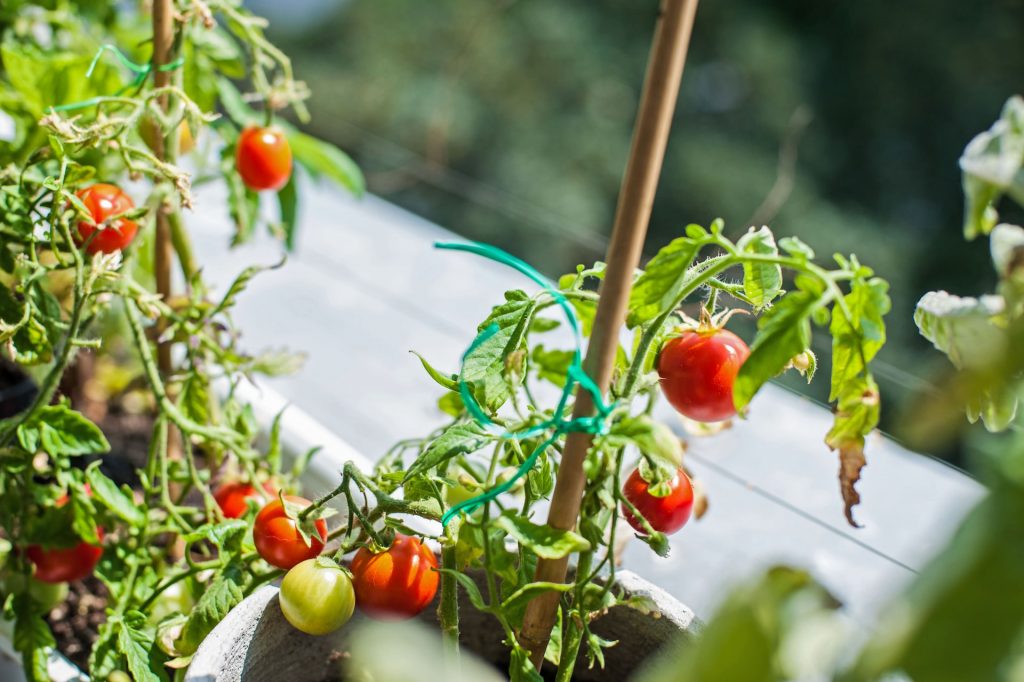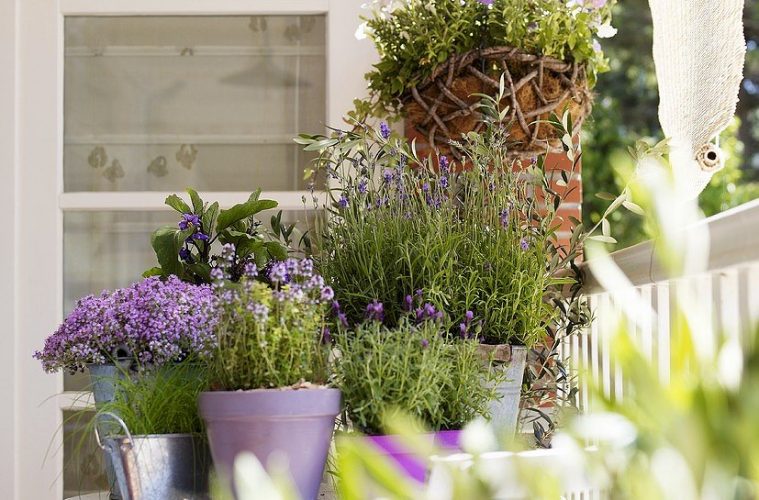Balcony spaces are often crying out to be made into gardens to grow favourite plants, shrubs and even trees as well as edibles for use in the kitchen. However, balconies are often situated in the harshest conditions – hot and windy in summer, and cold and windy in winter. Then there is the difficulty of hauling pots, plants, potting soil and patio furniture in lifts and along corridors more than likely trailing dirt as you go. It’s all worth it in the end though, to create an oasis in an urban setting. Here is how to make it work.
Designing with Pots
The easiest way to garden on a balcony is with pots. Combining containers of varying heights, shapes, textures and colours, adds interest. Beware though of adding too many different styles and colours as it could end up being a fruit salad. A grouping of similar tones of colours or one statement pot of varying colours is more pleasing to the eye. To save space, group troughs around the edge of the space or attach window box troughs to the outside of railings or walls.
Vertical Space
Hanging pots or baskets are a great way to use the vertical spaces in a design, along with vertical planting systems that attach to a wall for group planting like pocket wall planters. Stacked planting systems will also give height and provide more space for plants. Retro macrame plant hangers are helpful with placing plants at differing heights and something that is easy to learn to do from an online video. In very windy areas, stick to systems that are heavy enough to withstand the wind or can be bolted down.
Watch Your Watering
Drainage is one of the most essential things to take care of before you begin planting. All containers must have adequate drainage holes in the base to which a layer of stones or crocks are added, then a layer of coarse river sand before good quality potting soil goes in. Add a water retaining medium to help retain water and place any ground containers on pot feet, or on a layer of pebbles.
When it comes to watering, depending on the size of the balcony, you should be able to take care of all the watering with a large watering can. There are however some really clever watering systems on the market that allow you to water everything on timers and power the system with solar. Most containers need to be watered daily, however with good plant choices like tough drought-resistant plants and succulents, you can reduce watering times. Self-watering pots are also an option for reducing daily watering.
Balcony Garden Plants

Tom Jur via Unsplash
Choose tough plants that need little maintenance. Also consider using plants for height and plants that cascade together to maximise the space available. Find plants that need very little care but for the occasional deadheading, pruning or harvesting for use in the kitchen.
Perennials
Tough perennials are the backbones of any garden, including balconies and flowering perennials or those with textured or colourful leaves are even more useful in a design.
Hedges
For the more formal look, hedges are a great way to create green boundaries and also screen off the neighbours’ air-conditioning units or washing lines. Hedges can be low or high, depending on what you need them to do.
Succulents
Fleshly-leaved plants in the succulent range are ideal for balconies. Take for example sedums that are often grown on top of rooftops and come in many shapes and colours. Then there are the trailing succulents and pots of grouped succulents for a variety of textures and colours.
Edibles
From the square foot movement of growing edibles, we know that we can grow up to 50kg of vegetables and herbs per season in a space not more than a metre squared. Most vegetables including root vegetables can be grown in pots and we can’t rule out fruit trees and berries that make excellent container plants. New varieties of vegetables like tomatoes, brinjals, cucumbers and zucchini have been bred just for containers and are available as Patio Veg.
Settle In
Even the smallest of spaces can accommodate a chair or two and perhaps a small table that can be used to repot plants, sow seed or just sit and enjoy the surroundings. Bigger spaces that can accommodate entertaining and outdoor kitchens, make use of urban spaces to their fullest.
Featured image: Living4Media


